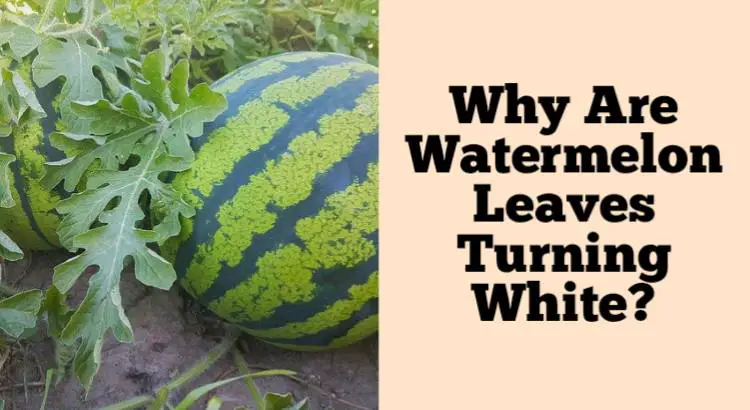Watermelon plants are a great source of summertime fruit. But, if you notice that the leaves on your watermelon plant have turned white or yellowish, it’s likely a sign of a disease called downy mildew.
Downy mildew is caused by a fungus that infects the underside of leaves. You can avoid this problem and still enjoy your watermelons by following these steps:
Mildew and fungus on the underside of your plant’s leaves can result in curling, brown spots, and leaf yellowing.
You may be wondering why the leaves of your watermelon plant are turning white. Watermelon plants are susceptible to many different kinds of fungus, including powdery mildew, which results in white, powdery spots on the underside of leaves.
If you notice that your watermelon leaves have become curling or have brown spots and leaf yellowing, it’s possible that your plant is suffering from a fungal infection.
Fungal infections can occur anytime during the growing season (usually after temperatures rise above 70 degrees Fahrenheit), especially if you’re growing your watermelons under hot or humid conditions.
This type of fungus will grow on the underside of your plant’s leaves as well as near tiny buds that appear near the stem tips. It looks like white or gray powder and can cause leaves to curl up and brown spots on both sides.
Inadequate watering, such as over-watering, underwatering and watering the leaves instead of the soil can cause white leaf tips.
If you’re having problems with your watermelon leaves turning white, there are a few possible causes. Inadequate watering, such as over-watering, underwatering and watering the leaves instead of the soil can cause white leaf tips.
Overwatering causes the roots to rot due to excess moisture in the soil. Underwatering causes the roots to die due to lack of moisture in the soil.
Watering only at the base of your watermelon plant may result in leggy growth and ultimately affect fruit yield because it doesn’t provide enough nutrients or support for healthy root development.
When growing watermelons indoors or outdoors it’s important not only to properly fertilize them but also ensure they have adequate drainage so that they don’t sit in standing water after rainstorms or after being watered manually every day for weeks at a time during hot weather spells where temperatures exceed 90 degrees Fahrenheit outside (32 degrees Celsius).
The most common cause of white, powdery deposits on a plant leaf is powdery mildew.
While it’s easy to get confused about the difference between powdery mildew and white mold, there are several ways to tell them apart.
White mold tends to be more powdery than downy and will grow on both the top and bottom of leaves. Powdery mildew, meanwhile, is more likely to be downy or fluffy in appearance under a microscope.
Powdery mildew appears as a white or grayish coating on the underside of leaves (which is why it’s called “powdery”).
It can also produce yellow patches that resemble fungus growth but aren’t actually fungal infection—they’re just areas where the plant has lost some chlorophyll due to damage caused by this disease.
The most common cause of white, powdery deposits on a plant leaf is powdery mildew—a fungus that forms a white powdery coating on the underside of leaves while spreading through wind-blown spores.
It’s especially common in warm climates during summer months when plants are growing quickly (like melons.).
Underwatering causes plants to wilt, with their leaves turning white.
If you’re a plant owner, you know that watering is an important part of keeping your plants happy and healthy. Watering correctly is especially important if you want to avoid wilting, which can cause leaves to turn white.
Overwatering can cause roots to rot as well, so be careful not to overwater. If you’re unsure whether or not your plant needs watering, it’s best to ask a professional.
If you have your plant indoors make sure it is not too close to drafty windows or walls that are too hot.
Watermelon plants need to be kept in a warm environment with plenty of sunlight. If you have your plant indoors make sure it is not too close to drafty windows or walls that are too hot.
It is also important that you keep your plant away from heating vents, ovens and other appliances that get too hot.
If you are going to be away from home for an extended period of time make sure someone else can care for your plant while you are gone.
Conclusion
If your watermelon plant is indoors, make sure it’s not too close to drafty windows or walls that are too hot. If you have your plant outdoors, consider using shade cloth over it during the hottest parts of the day.

